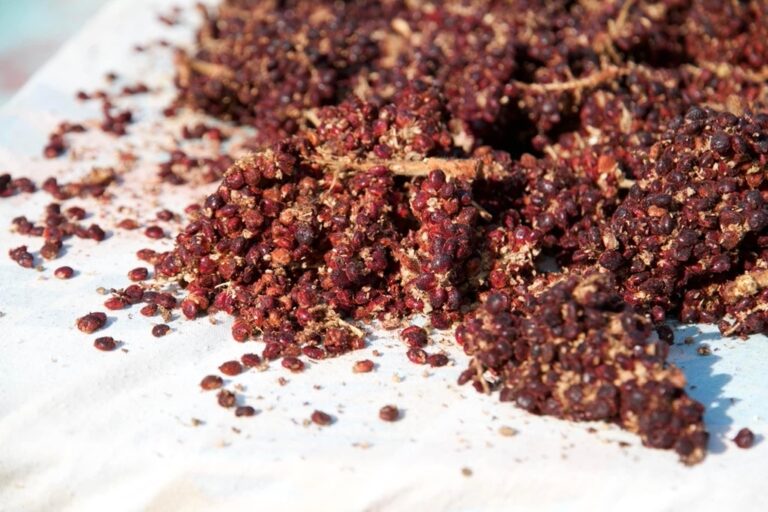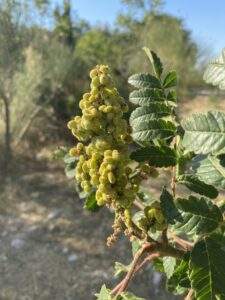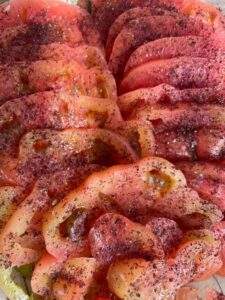sumac
Lebanon's favourite spice?
One half of shorkk wouldn’t put anything else on fried eggs! What is it about sumac that generates so much affection? For many it is the citrusy kick of this spice, a touch of acidity essential in many Lebanese dishes, which is the key. Sumac’s lemony taste is an ingredient in za’atar, the popular Lebanese mixture of oregano and sesame seeds eaten on manoushé (flat breads).

where does it come from?
The rhus coriaria Linn, as sumac is otherwise known, grows wild throughout Lebanon. A shrub which reaches 2 metres high, it has heavy clusters of berries which turn deep red at the end of the summer. Families gather these clusters and spread them out on a clean cloth to “ripen” in the sun. Once the colour of the berries is dark red, the outer layer of the skin is rubbed away from the tiny stone. Gloves are worn, as the berry is very astringent. The mixture is then sieved, to remove the tiny stone, and left once more in the sun to dry completely.

new to the UK?
Thanks to the popularity of Middle Eastern food in the UK, sumac is now available in our supermarkets. Although it has to be said that Zejd sumac, grown in Beino, in the north of Lebanon, tastes totally different to a generic sumac. According to Professor Daniel Newman translator of The Sultan’s Feast: A 15th century cookbook, sumac was brought to these shores by the Romans. For some reason, sumac disappeared from our culinary lexicon until it was reintroduced by Ottolenghi and other chefs inspiring the UK with ingredients from the eastern Mediterranean.
good for your health
Research by Oxford Brookes University has shown that sumac is rich in antioxidants and polyphenols and could therefore have significant health benefits. Its fat content is both monounsaturated (oleic acid) and polyunsaturated (lineoleic acid). Used in the eastern Mediterranean for centuries, could its health benefits be another reason to adapt to a more Mediterranean diet?
